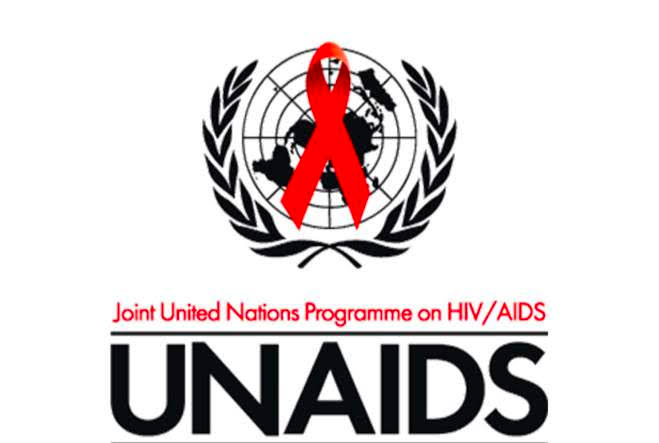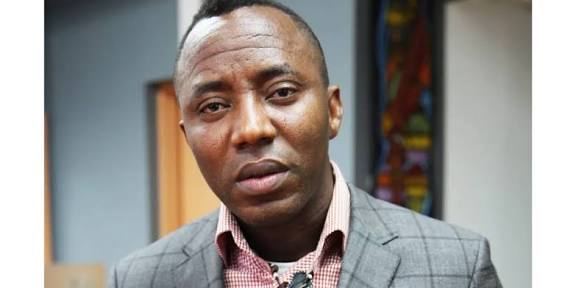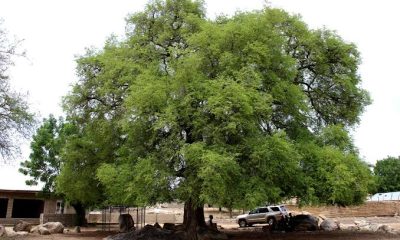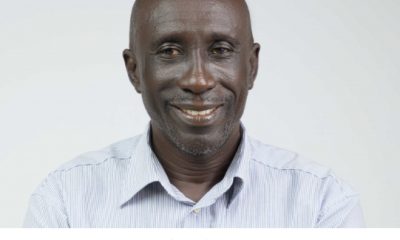News
UNAIDS: Funding Crisis of AIDS Undermining Decades of Progress

UNAIDS: Funding Crisis of AIDS Undermining Decades of Progress
By: Michael Mike
UNAIDS has launched its 2025 Global AIDS Update, “AIDS, Crisis and the Power to Transform”, which shows that a historic funding crisis is threatening to unravel decades of progress unless countries can make radical shifts to HIV programming and funding.
The report launched on Wednesday highlights the impact that the sudden, large-scale funding cuts from international donors are having on countries most affected by HIV. Yet it also showcases some inspiring examples of resilience, with countries and communities stepping up in the face of adversity to protect the gains made and drive the HIV response forward.
Some 25 of the 60 low and middle-income countries included in the report have indicated increases in domestic budgets for their HIV responses in 2026. The estimated collective rise among the 25 countries amounts to 8% over current levels, translating to approximately USD 180 million in additional domestic resources. This is promising, but not sufficient to replace the scale of international funding in countries that are heavily reliant.
Despite marked progress in the HIV response in 2024, the weakening aid consensus and significant and abrupt funding shortfalls in the HIV response in 2025 have triggered widespread disruption across health systems and cuts to frontline health workers—halting HIV prevention programmes and jeopardizing HIV treatment services.
According to the report, in Mozambique alone, over 30 000 health personnel were affected. In Nigeria, pre-exposure prophylaxis (PrEP) initiation has plummeted from 4000 to 6000 people per month. If US-supported HIV treatment and prevention services collapse entirely, UNAIDS estimates that an additional 6 million new HIV infections, and 4 million additional AIDS-related deaths could occur between 2025 and 2029.
“This is not just a funding gap—it’s a ticking time bomb,” said UNAIDS Executive Director Winnie Byanyima. “We have seen services vanish overnight. Health workers have been sent home. And people—especially children and key populations—are being pushed out of care.”
Even before the large-scale service disruptions, the reported data for 2024 shows that 9.2 million people living with HIV were still not accessing life-saving treatment services last year. Among those were 620 000 children aged 0—14 years living with HIV but not on treatment which contributed to 75 000 AIDS-related deaths among children in 2024.
In 2024, 630 000 people died from AIDS-related causes, 61% of them in sub-Saharan Africa. Over 210 000 adolescent girls and young women aged 15—24 acquired HIV in 2024—an average of 570 new infections every day.
HIV prevention services are severely disrupted. Community-led services, which are vital to reaching marginalized populations, are being defunded at alarming rates. In early 2025, over 60% of women-led HIV organizations surveyed had lost funding or were forced to suspend services. The United States President’s Emergency Plan for AIDS Relief (PEPFAR) reached 2.3 million adolescent girls and young women with comprehensive HIV prevention services in 2024 and enabled 2.5 million people to use HIV PrEP—many of these programmes have now stopped completely.
Meanwhile, the rise in punitive laws criminalizing same-sex relationships, gender identity, and drug use is amplifying the crisis, making HIV services inaccessible. Countries like Uganda, Mali and Trinidad and Tobago have recently increased legal penalties, pushing key populations further from care and dramatically raising their risk of acquiring HIV.
South Africa currently funds 77% of its AIDS response and its 2025 budget review includes a 5.9% annual increase in health expenditure over the next three years, including a 3.3% annual increase for HIV and tuberculosis programmes. The government intends to finance the development of a patient information system, a centralized chronic medicine dispensing and distribution system, and a facility medicine stock surveillance system.
As of December 2024, seven countries—Botswana, Eswatini, Lesotho, Namibia, Rwanda, Zambia, and Zimbabwe—had achieved the 95-95-95 targets: 95% of people living with HIV know their status, 95% of those are on treatment, and 95% of those on treatment are virally suppressed. These successes must be maintained and further scaled up.
The report also highlights the emergence ofu unprecedented, highly effective new prevention tools like long-acting injectable PrEP, including Lenacapavir, which has shown near-complete efficacy in clinical trials—though affordability and access remain key challenges.
“There is still time to transform this crisis into an opportunity,” said Ms. Byanyima. “Countries are stepping up with domestic funding. Communities are showing what works. We now need global solidarity to match their courage and resilience.”
The 2025 Global AIDS Update urgently stated that the global HIV response cannot rely on domestic resources alone. The international community must come together to bridge the financing gap, support countries to close the remaining gaps in HIV prevention and treatment services, remove legal and social barriers, and empower communities to lead the way forward.
UNAIDS emphasized that every dollar invested in the HIV response not only saves lives but strengthens health systems and promotes broader development goals. Since the start of the epidemic, 26.9 million deaths have been averted through treatment, and 4.4 million children protected from HIV infection through vertical transmission prevention.
“In a time of crisis, the world must choose transformation over retreat,” said Ms Byanyima. “Together, we can still end AIDS as a public health threat by 2030—if we act with urgency, unity, and unwavering commitment.”
UNAIDS report is being launched ahead of the Scientific AIDS Conference IAS 2025
taking place in Kigali, Rwanda, from 13-17 July 2025.
UNAIDS: Funding Crisis of AIDS Undermining Decades of Progress
News
All Hands Must Be On Deck To Boost Nigeria’s Business Environment, Says VP Shettima

All Hands Must Be On Deck To Boost Nigeria’s Business Environment, Says VP Shettima
- Urges states, MDAs, others to work towards actualizing President Tinubu’s reforms at PEBEC Gala and Awards Night
By: Our Reporter
The Vice President, Senator Kashim Shettima, has implored state governments, ministries, departments and agencies (MDAs) of the federal government, the organised private sector, and other stakeholders to do more in advancing the business environment in Nigeria.
He acknowledged the successes recorded this year, describing them “as the triumph of collaboration over silos,” even as he said when the 36 states of the federation, MDAs, development partners and other critical sectors commit to working together across the board, it becomes a big win for Nigeria.
Senator Shettima gave the charge on Tuesday in Abuja during the PEBEC Gala and Awards Night organized by the Presidential Enabling Business Environment Council (PEBEC) to celebrate exceptional public service delivery, reform excellence, and collaborative efforts toward improving Nigeria’s business environment.

He said, “The end of this night does not signal the end of your pursuit of excellence because excellence is a culture, not an event. It lives only where it is nurtured. And so, in the new year, let us do even more to advance the reform agenda for Nigeria’s business environment.
“Let us build a nation where efficiency is normal, where transparency is routine, and where excellence is the governing creed of public service.”
The Vice President underscored the importance of working as a team, noting that while every organisation reflects the kind of people working within, the people cannot “achieve excellence in a vacuum.”
According to VP Shettima, excellence is cultivated – “the result of choices, of discipline, of a refusal to settle for the bare minimum,” adding that it is not something that is inherited.

He observed that it is for this reason that the Gala and Awards Night was organised “to honour the belief that public service can and must be synonymous with excellence.”
Reminding stakeholders that the ball is in their court to make a difference, the VP said, “His Excellency President Bola Ahmed Tinubu has laid the critical foundation for the reforms required to reset our economy, and the success of this depends on the awardees we celebrate tonight.
“Your dedication and excellence embody the spirit of this administration’s Renewed Hope Agenda. You represent the very best of our public sector, and your work is the foundation upon which our nation’s prosperity is built.”
Senator Shettima described the Gala and Awards Night as “a celebration of public servants across Nigeria who have refused to accept mediocrity as our national ceiling,” by working hard to actualize the ongoing reforms undertaken by the Tinubu administration.
“The Presidential Enabling Business Environment Council, PEBEC, has spent the last couple of years championing reforms that speak to the soul of our economic aspirations—reforms that make it easier to do business, that restore investor confidence, that ensure our institutions work at the speed of national ambition.
“And tonight, we salute the men and women driving this mission forward, those who have placed the national interest above their comfort zones,” he said.
Acknowledging that there had been interagency collaboration on reforms that rapidly improve the nation’s business environment, the Vice President cited the establishment of the Ports and Customs Efficiency Committee (PCEC), which he said is “already bearing significant fruit through joint inspection procedures at” the ports.
Earlier, the Deputy Chief of Staff to the President (Office of the Vice President), Senator Ibrahim Hadejia, said under the leadership of Vice President Shettima, PEBEC has continued to deliver reforms that is incrementally impacting businesses in different sectors across the country.

He, however, reminded stakeholders that the task of transforming Nigeria’s business environment is far from over, as every improvement celebrated at the 2025 awards will be the foundation upon which more lasting reform initiatives will be built.
On her part, the Director-General of PEBEC, Princess Zahrah Audu, outlined some of the achievements recorded by the agency in the past year through deliberate and result-oriented collaboration to transform operations across MDAs, noting that reform is embedded and remains a critical component of PEBEC’s service delivery.
She added that the scope of PEBEC’s achievements under the current dispensation reflects the depth of partnership established and nurtured by management with critical stakeholders across the country over the past months.
The highpoint of the occasion was the unveiling of the 2025 Business Facilitation Act (BFA) Compliance Report and the Subnational Ease of Doing Business Report, as well as the presentation of various categories of awards, including access to justice; legislative trailblazer; leadership of action and business advocacy and partnership, among others.
Also present at the event were the Deputy Governor of Benue State, Dr Sam Ode; Deputy Governor of Enugu State, Mr Ifeanyi Ossai; Chairman of NDLEA, Brig. Gen. Mohammed Buba Marwa; Executive Secretary of the Nigerian Shippers Council, Mr Pius Akutah; Executive Vice Chairman of Nigerian Communications Commission (NCC), Dr Aminu Maida; Managing Director of the Nigerian Ports Authority, Dr Abubakar Dantsoho, other heads of agencies and parastatals; members of the diplomatic corps, and captains of industry, among others.
All Hands Must Be On Deck To Boost Nigeria’s Business Environment, Says VP Shettima
News
PRESIDENT TINUBU NOMINATES GENERAL CHRISTOPHER MUSA AS THE NEW MINISTER OF DEFENCE

PRESIDENT TINUBU NOMINATES GENERAL CHRISTOPHER MUSA AS THE NEW MINISTER OF DEFENCE
By: Our Reporter
President Bola Ahmed Tinubu has nominated General Christopher Gwabin Musa as the new Minister of Defence.
In a letter to Senate President Godswill Akpabio, President Tinubu conveyed General Musa’s nomination as the successor to Alhaji Mohammed Badaru Abubakar, who resigned on Monday.
General Musa, 58, on December 25, is a distinguished soldier who served as Chief of Defence Staff from 2023 until October 2025. He won the Colin Powell Award for Soldiering in 2012.
Born in Sokoto in 1967, General Musa received his primary and secondary education there before attending the College of Advanced Studies in Zaria. He graduated in 1986 and enrolled at the Nigerian Defence Academy the same year, earning a Bachelor of Science degree upon graduation in 1991.
General Musa was commissioned into the Nigerian Army as a Second Lieutenant in 1991 and has since had a distinguished career. His appointments include General Staff Officer 1, Training/Operations at HQ 81 Division; Commanding Officer, 73 Battalion; Assistant Director, Operational Requirements, Department of Army Policy and Plans; and Infantry Representative/Member, Training Team, HQ Nigerian Army Armour Corps.
In 2019, he served as Deputy Chief of Staff, Training/Operations, Headquarters Infantry Centre and Corps; Commander, Sector 3, Operation Lafiya Dole; and Commander, Sector 3 Multinational Joint Task Force in the Lake Chad Region.
In 2021, General Musa was appointed Theatre Commander, Operation Hadin Kai. He later became Commander of the Nigerian Army Infantry Corps before being appointed Chief of Defence Staff by President Tinubu in 2023.
In the letter to the Senate, President Tinubu expressed confidence in General Musa’s ability to lead the Ministry of Defence and further strengthen Nigeria’s security architecture.
End
News
Finally, DSS Arraigns Sowore on alleged Cybercrime Offences

Finally, DSS Arraigns Sowore on alleged Cybercrime Offences
By: Our Reporter
Judge bars him from inciting public, undermining national security
The Department of State Services (DSS) on Tuesday arraigned a politician and online publisher, Omoyele Sowore, before a Federal High Court in Abuja, for alleged cybercrimes, with the court barring him from further making statements that are detrimental to the peace and security of the country.
Justice Mohammed Umar, in a ruling, threatened to revoke the bail granted Sowore’ should he ever make such statements. The arraignment came after two previous attempts, with the politician’s lawyer introducing what the DSS lawyer, Akinolu Kehinde SAN, called legal obstacles.
On Tuesday, however, Justice Umar held that since there was evidence that Sowore was a presidential candidate in the country before and having also earlier been granted bail by the court, with his international passport still being held by the court, he was entitled to be granted bail on self-recognition.
The ruling was on a bail application argued by his lawyer, Marshall Abubakar, shortly after Sowore was arraigned on a five-count charge, in which he is accused of defaming President Bola Tinubu by referring to him as a criminal in his posts on X and Facebook.
When the charge, being prosecuted by the Department of State Services (DSS), was read to him, Sowore pleaded not guilty.
In the charge, Sowore, the presidential candidate of the African Action Congress (AAC) in the 2019 and 2023 elections, is accused of contravening the provisions of the the Cybercrimes (Prohibition, Prevention, etc) Amendment Act, 2024 and the Criminal Code Act by calling President Bola Tinubu a criminal
The two other defendants listed in the charge, marked: FHC/ABJ/CR/484/2025 are X Incorp (formerly Twitter) and Meta (Facebook) Incorp.
Details shortly.
Finally, DSS Arraigns Sowore on alleged Cybercrime Offences
-

 News2 years ago
News2 years agoRoger Federer’s Shock as DNA Results Reveal Myla and Charlene Are Not His Biological Children
-

 Opinions4 years ago
Opinions4 years agoTHE PLIGHT OF FARIDA
-

 Opinions4 years ago
Opinions4 years agoPOLICE CHARGE ROOMS, A MINTING PRESS
-

 News2 years ago
News2 years agoEYN: Rev. Billi, Distortion of History, and The Living Tamarind Tree
-

 News8 months ago
News8 months agoFAILED COUP IN BURKINA FASO: HOW TRAORÉ NARROWLY ESCAPED ASSASSINATION PLOT AMID FOREIGN INTERFERENCE CLAIMS
-

 ACADEMICS2 years ago
ACADEMICS2 years agoA History of Biu” (2015) and The Lingering Bura-Pabir Question (1)
-

 Columns2 years ago
Columns2 years agoArmy University Biu: There is certain interest, but certainly not from Borno.
-

 Opinions2 years ago
Opinions2 years agoTinubu,Shettima: The epidemic of economic, insecurity in Nigeria





